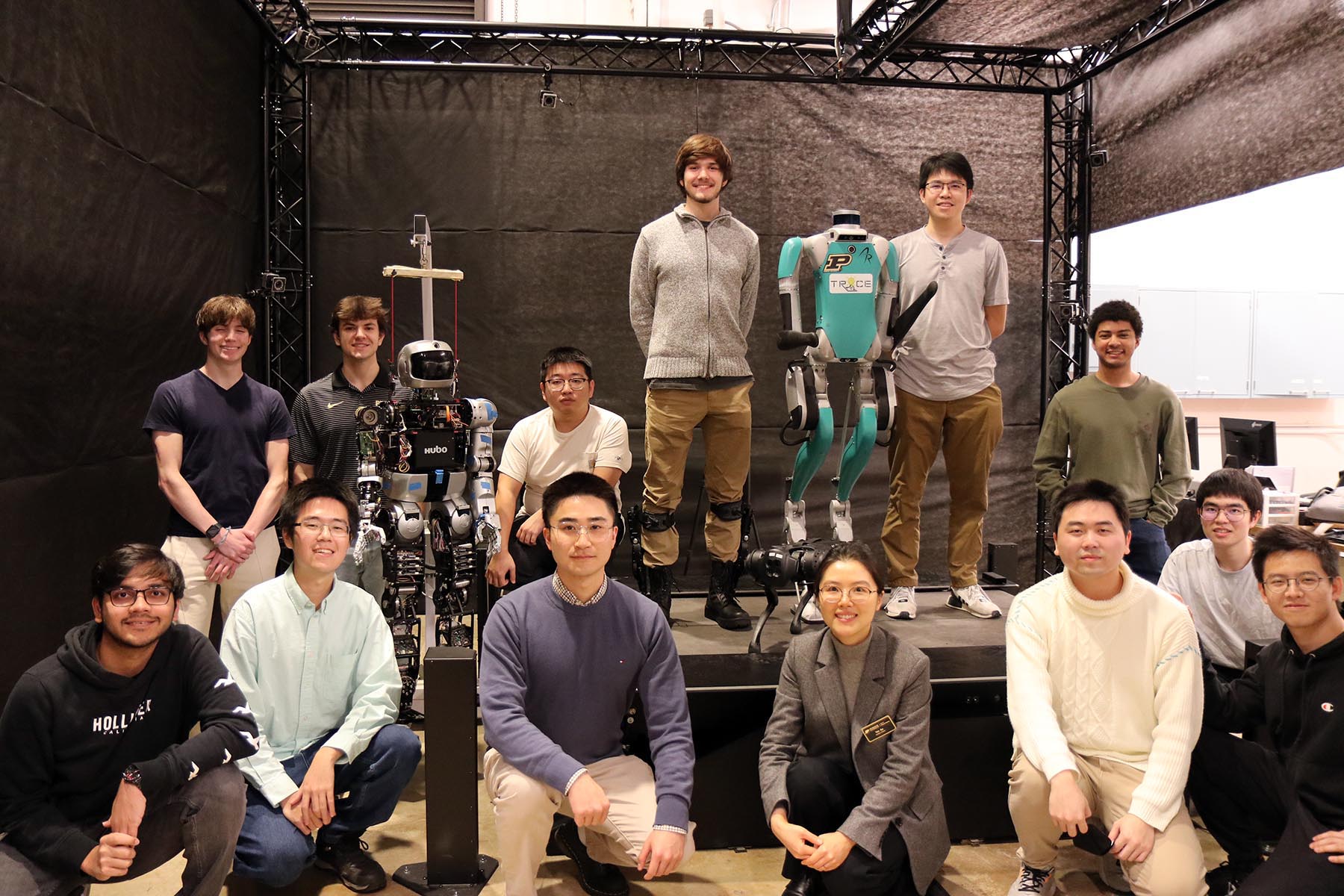Helping robots find their sea legs
“These robots are used for inspection, maintenance, disaster response, surveillance, security, and many other applications,” said Yan Gu, associate professor of mechanical engineering. “But there remains a major challenge to overcome for legged locomotion, and that is reliable operation on a moving surface.”
Gu points to the popular Boston Dynamics videos, where both four-legged and two-legged robots perform impressive gymnastic feats. “My colleagues in the field have performed amazing work,” Gu said, “but a major assumption in these tests is that the ground is stationary. Put that same robot on the deck of a ship at sea, and its dexterity would deteriorate. Our work is to explicitly consider the movement of the ground and incorporate it into the dynamics model of the robot.”
With this in mind, the Office of Naval Research (ONR) has awarded Gu a three-year, $750,000 grant as part of its 2024 Young Investigator Program (YIP).
“The Navy is very interested in deploying legged robots on naval vessels,” Gu said. “That’s why the Naval Research Laboratory invited my group and my collaborators at UMass Lowell to test some of the most advanced legged robot systems at sea. The Naval Surface Warfare Center and the Naval Undersea Warfare Center joined us at the field tests as well.”
In March 2023, Gu travelled to Norfolk, Virginia and boarded an M80 Stiletto naval ship, bringing the four-legged Boston Dynamics Spot robot as a test article. “Spot performed well most of the time,” Gu said, “but when the waves became mild-to-moderate, or when the ship began moving at high speed, we witnessed lots of unstable and unsteady behavior. That’s the issue we will be investigating as part of this project.”

Back on terra firma, Gu’s lab at Purdue has established an extremely versatile test environment to mimic the high seas. It starts with a Motek M-Gait moving treadmill system that rocks and sways in customizable patterns. It also features a split belt that can spin at two different speeds, and force sensors to measure the impact of footsteps. Surrounding the treadmill are 20 motion-sensing cameras that perfectly track the robot’s kinematics. Normally designed for human biomechanics, this setup is perfect for experimenting and analyzing the movement of legged robots.
For their main test subject, Gu utilizes Agility Robotics’ Digit, standing 5-feet-1-inches tall and weighing 93 pounds. In addition to its 30 joints allowing versatile legged locomotion, Digit features multiple sensors and cameras which enable it to interpret its environment. These are critical for Gu and her team when they start to build their algorithms for adapting to moving and unstable surfaces.
“Right now, we are just taking baby steps,” Gu said. “We are deriving new models, new estimation algorithms, and new control approaches that will help this robot walk reliably on a moving surface. Eventually we want these robots to also perform manipulation, so that they can be more useful in maintenance and inspection tasks on boats, trains, aircraft, and other dynamic environments.”
“I’m deeply honored to be working with the Office of Naval Research,” Gu said. “I’ve enjoyed our collaborations in the past. I’m looking forward to tackling the challenge of making robots useful on a moving surface.”

Writer: Jared Pike, jaredpike@purdue.edu, 765-496-0374
Source: Yan Gu, yangu@purdue.edu
